The folktales wouldn’t be the same without the Brothers Grimm. The iconic duo of storytellers sealed an era with their excellent tales and added a dream aspect to people’s lives. Therefore, it’s only fair that their oeuvre found a welcoming house in the city they lived and worked. The Grimmwelt Kassel is one of the most impressive tributes I’ve ever seen, and it’s definitely one of the best things to see on this side of Germany.
On a recent visit to the city, I had the opportunity to visit the Grimm World Kassel and shoot several photos. And I must admit I was so impressed that I decided to dedicate a separate article to this beautiful museum. So, in this article, you will find information and see photos from the Grimmwelt Kassel.
Moreover, to better understand the significance of Brüder Grimm, you’ll also read 10 facts about the Brothers Grimm. Lastly, at the bottom of this article, you’ll find the titles of the most famous fairy tales of the Grimm Brothers.
Let’s start.
*Some links are affiliate links. It means that if you buy something, I might earn a small commission at no additional cost to you.
Grimmwelt Kassel: Museum photos & Brothers Grimm facts
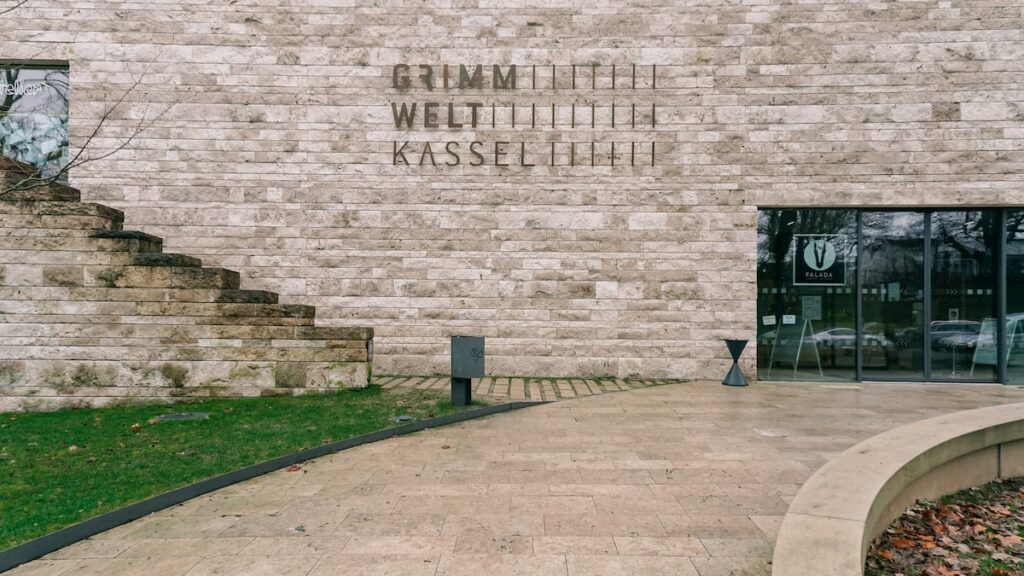
Located not far away from the city center, the Grimmwelt Kassel presents the work of Jacob and Wilhelm Grimm. The Grimm World Museum offers a unique insight into the lives of the famous brothers combining artifacts, artworks, and installations in an interactive way.
So, let’s figure out what makes this museum unique and also more some facts about the famous duo.
The Brothers Grimm weren’t born in Kassel

Kassel was not the hometown of the Grimms. Jacob and Wilhelm Grimm were actually born in Hanau. Jacob Grimm was born in 1785, and Wilhelm was born in 1786. A couple of years later, in 1791, the Grimm family moved to the nearby town of Steinau. Their father, Philipp Grimm, was appointed a job as a jurist, and the Grimms enjoyed a good life in Steinau. However, the happy childhood of the Brothers Grimm was interrupted tragically.
In 1796 Philipp Grimm died of pneumonia, and this caused great poverty to the family. Two years later, in 1798, Jacob and Wilhelm Grimm left Steinau and relocated to Kassel. Their aunt paid for their studies, and the brothers spent more than 25 years in Kassel.
Social injustice shaped their characters
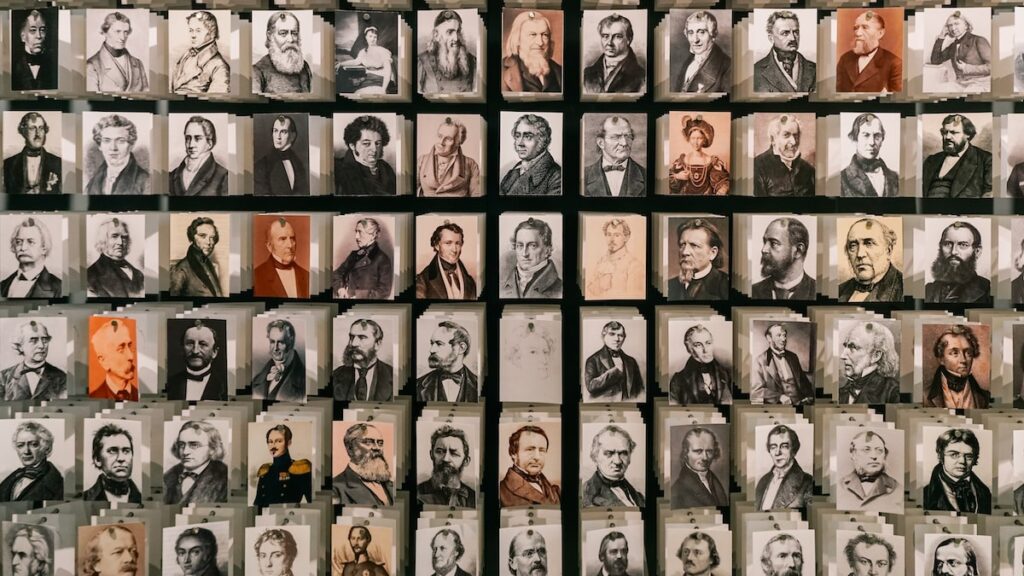
Throughout their lifetime, the Grimm Brothers showed interest in social injustice. They were actually affected by inequality early on during their studies at the University of Marburg. Students of lower social status weren’t treated equally -and they were among these students. However, they didn’t let this fact drag them down, and they chased their academic careers with even more passion.
The Brothers Grimm didn’t want to obey a king’s demands

The Brothers Grimm always took a stand, and they defended their opinions passionately. Being against social injustice from an early age meant they wouldn’t betray their beliefs even if they had to pay a high personal cost.
In the 1830s, the Grimms taught at the University of Göttingen, one of the most famous university cities in Germany. They were well-respected, and their oeuvre was already recognized. However, in 1837 they lost their university positions because they joined the Göttingen Seven. At this time, the King of Hannover, Ernest Augustus, demanded oaths of allegiance from every civil servant. Among the civil servants that had to give an oath were also the Göttingen professors.
The Grimms were, apparently, among the Göttingen Seven, and they were dismissed. Jacob was deported from Hannover and went back to Kassel. Soon, Wilhelm joined him together with his wife Dortchen and their four children. Once again, the Brothers Grimm faced poverty. And yet, this motivated them to accomplish their magnum opus.
The Grimm Brothers wrote the most famous Dictionary of the German language
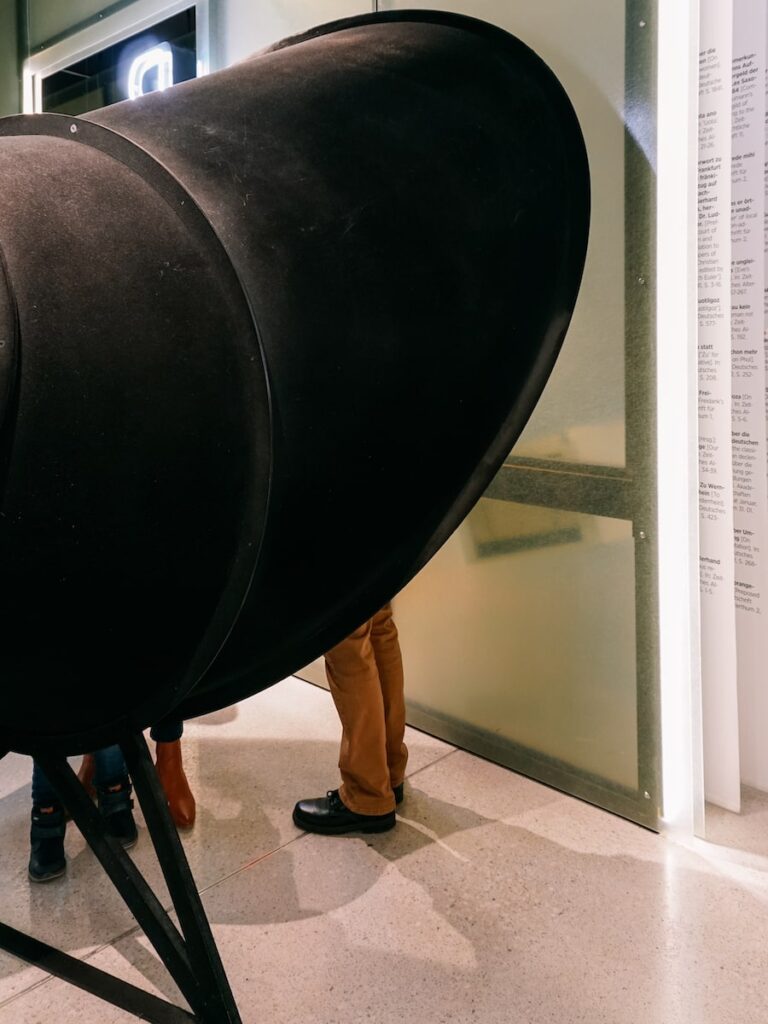
Although everybody knows the Brothers Grimm for their folktale collections, their magnum opus was the Dictionary of the German Language. The Deutsches Wörterbuch haunted them for the rest of their lives, and the first volume was published 17 years after they left Göttingen, in 1854.
Their financial condition never really improved. However, their work had passionate supporters that helped them financially together with a small circle of friends.
Different characters, common goals
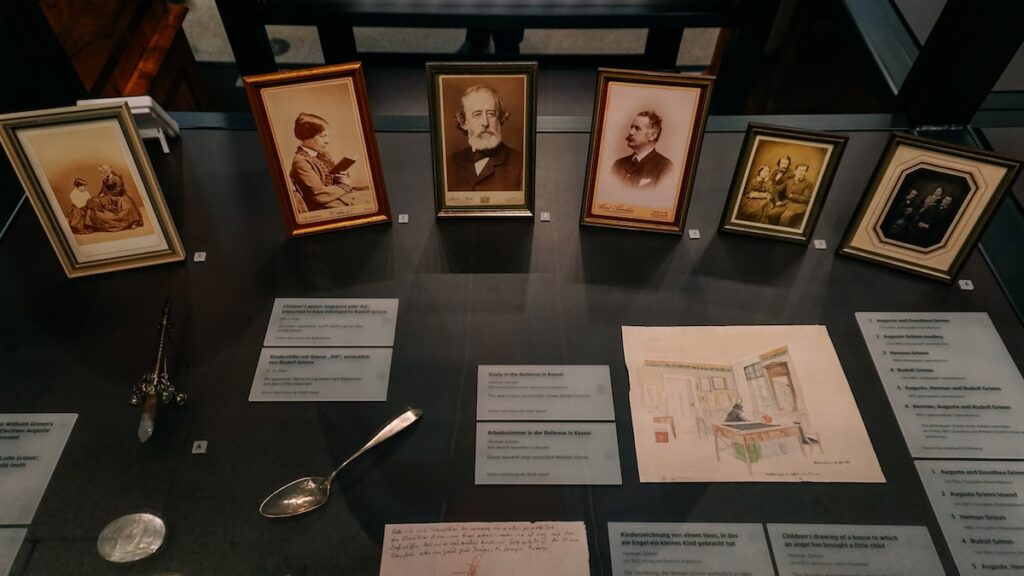
Despite their close relationship, the Brothers Grimm were different in character. Jacob was an introvert, while Wilhelm was a very outgoing person; Wilhelm got married, but Jacob never did. Life difficulties created a strong bond between them, and this connection remained untouched until their deaths.
Wilhelm died in Berlin in December 1859 due to an infection. This caused great grief to Jacob, who became even more reclusive. However, he kept working on the German Dictionary until his death in 1863.
Not all of the Brothers Grimm tales were for kids

The tales collections of the Grimms were not always kid-friendly. For example, some tales included narratives of kids being eaten, and this definitely worried contemporary scholars and citizens. However, the decision was to collect folktales and make them known to a broader audience. On the other hand, from some of the stories, various violent incidents were deleted.
On the other hand, sexual scenes were deleted from the books by the Grimms.
The Grimms had an ambition for a united Germany
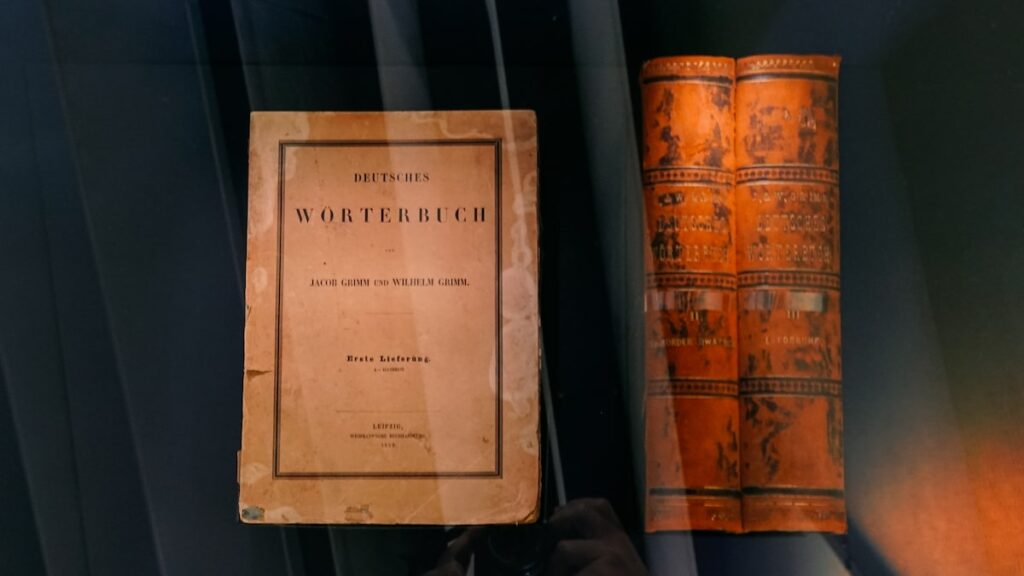
One might rightly wonder what the ambition behind collecting these tales was. The Grimm Brothers fought intellectually for their country’s unity and believed that Germany’s past was depicted in local folktales. In order to understand better the country’s historical background, they tried to implement in their work tales representing a variety of narratives, themes, and aspects.
The Brüder Grimm kept expanding the “Children’s Tales”
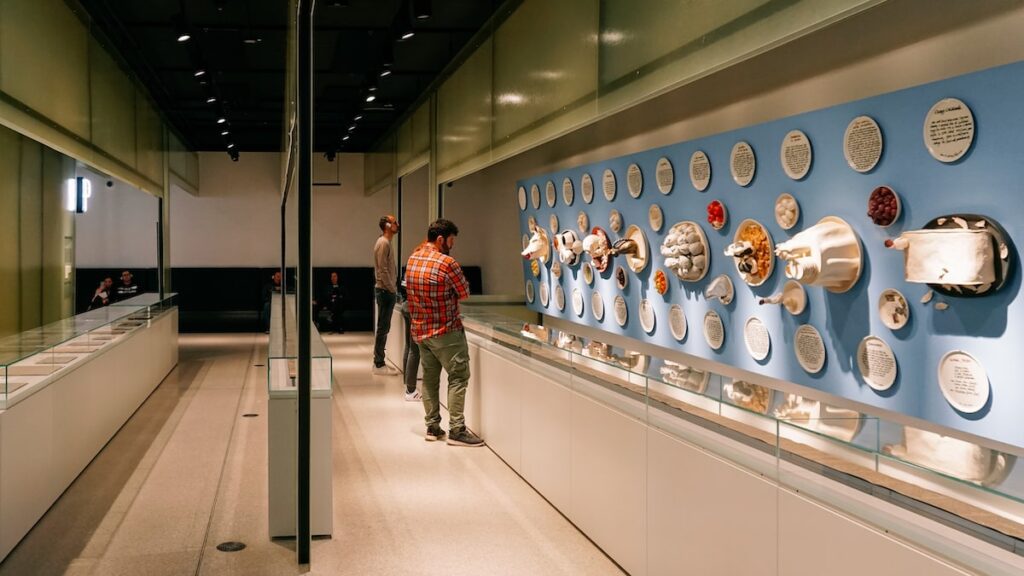
The first volume of those oral stories was published in 1812 and contained 86 stories. Then, in 1815, a second volume containing 70 stories followed. Five more editions were published, and the final one, in 1857, had a total of 211 tales.
Nazi Germany used the Grimms’ tales to promote antisemitic views
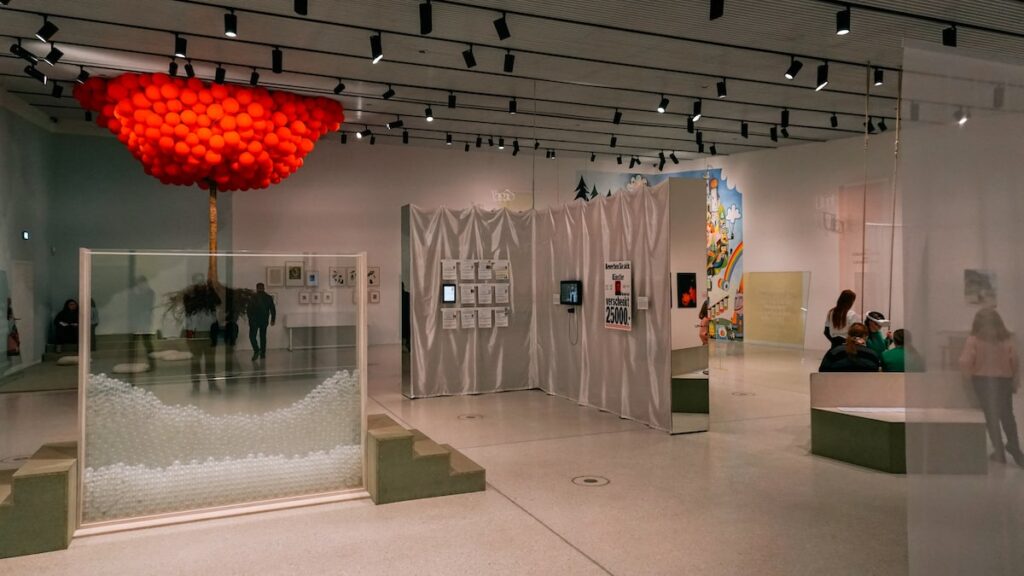
The Nazis in Germany took advantage of several Grimm tales and used them to promote their misanthropic agenda. Folktales like “The Girl who was killed by Jews” or “The Jew among thorns” were used to portray the Jews as an evil force and enemy of Germany. Convenient for their antisemitic agenda, the Nazis made it obligatory for every household to own a copy of the “Children’s Tales.”
After the end of the War, the Allies banned the book for a few years.
There is a German Fairy Tale Route

The German Fairy Tale Route is probably the ultimate tribute to the Brothers Grimm. Established in the 1970s, the Fairy Tale Route runs between Hanau and Bremen and is 600 kilometers long. The route’s focus is the locations Wilhelm and Jacob Grimm worked but also the places the folktales come from, like the Town Musicians of Bremen.
The Deutsche Märchenstraße Society is located in Kassel and offers various brochures for exploring the route. You can see the brochures here.
Grimmwelt Kassel: Practical information
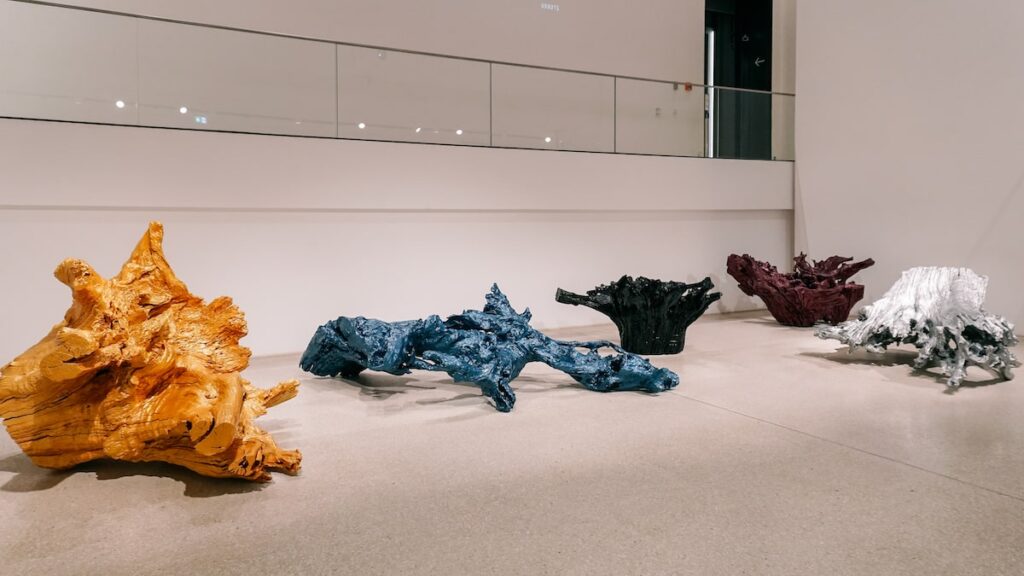
As I stated at the beginning of this article, the Grimmwelt Kassel is a must-see. It is a highly interactive museum, and -exactly like the tales- it’s not just for kids. I had a fantastic time wandering through the rooms, and as you see in the photos, it covers every aspect of the Grimm Brothers’ lifetime.
Below, you can find information regarding the museum’s opening times and tickets. For special exhibitions and up-to-date information, I encourage you to visit the museum’s website.
Grimmwelt Kassel opening times
The Grimmwelt Kassel is open Tuesday to Sunday between 10 am and 6 pm. On Fridays, the museum remains open for two more hours, until 8 pm.
The Grimmwelt Kassel is closed on Mondays.
Tickets
The adult tickets cost 10 euros; the reduced tickets cost 7 euros. For families visiting the Grimm World, the ticket is 25 euros.
Falada cafe

The museum has a fantastic cafe with a view over the city of Kassel. It is a perfect spot to relax after visiting the exhibitions and enjoy a cup of coffee and delicious sweets. You can see more about Falada Cafe here.
What are the most famous Grimm fairy tales?

The ten most famous Grimm fairy tales are:
- Cinderella
- Snow White
- Hansel and Gretel
- The Frog King
- The Musicians of Bremen
- Little Red Riding Hood
- Rapunzel
- The Juniper Tree
- Rumpelstiltskin
- Mother Holle
Grimmwelt Kassel: conclusion
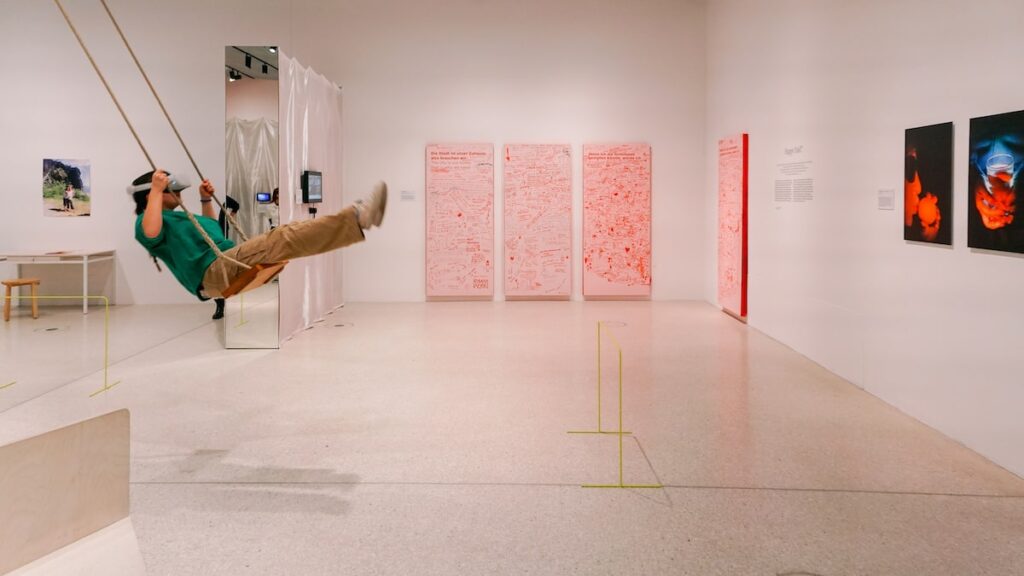
The Grimmwelt Kassel is one of the nicest German museums and definitely, the place to see if you’re interested in the Grimm fairytales. Visiting the museum feels like entering the colorful yet enigmatic world of the Grimm Brothers. The two linguists left their footprint in the literary world, and their dedication to their work is truly fascinating.
One can only admire the Grimms’ passion for research and writing: to collect more than two hundred folktales and at the same time work on the biggest German Language Dictionary is something to respect.
If you’re traveling to Hessen, make sure to include Kassel in your itinerary. Although the city is famous for the Dokumenta, Grimmwelt Kassel is a place that you need to see.
More about Germany: The women of Bleibtreustrasse, Kafka in Prague, Berlinale guide, The art of replication, True Pictures
Pin it for later

Sharing is caring. Share this article about the Brothers Grimm and the Grimmwelt Kassel with your friends.
Last Updated on June 3, 2023 by George Pavlopoulos

